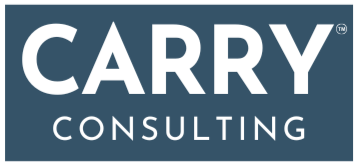
How to Measure the Impact of Your Employee Communications Strategy
Leveraging effective employee communication is essential for any organization to thrive. Not only does it shape company culture and support engagement, but it also creates alignment between leadership and employees.

Supercharge Your ERGs: The Power of Customized Content
Want to create a work culture that embodies inclusivity, supporting employees, and leads to engagement? Then you probably know that Employee Resource Groups (ERGs) are essential. But to have ERGs really reach their potential, HR leaders and executives must provide them with the right tools and resources — and that starts with customized content.

The Science of Good Questions: Creating Surveys That Employees Want to Answer
Ever issue a survey to your employees only to be sorely disappointed in the quality of the feedback? While employee surveys are a powerful tool for understanding workforce sentiment, improving engagement, and driving organizational change, they cannot operate in a vacuum. Their very success lies in the quality of the questions within them.

Are Your Employees Tuned Out? How to Simplify and Align Your Internal Comms
As an HR leader or executive, you likely know that without strong communication, your organization cannot thrive. But if too many of your internal messages seem to fall on deaf ears, you likely have a problem on your hands. Your employees might be disengaged, overwhelmed, or even confused by all the noise.

Why Your Employees Aren’t Engaging With Your Benefits — And How to Fix It
Employee benefits – when done right – are what job seekers prioritize in their search, and what can have a profound impact on whether employees remain loyal. And for companies? Benefits are one of the most significant investments a company makes. (In 2024 alone, benefit costs to the employer came to 29.7 percent for private industry workers.) Yet countless HR leaders struggle with low engagement in their benefits programs. If you’re seeing lackluster participation rates or employees expressing confusion about what’s available to them, there’s hope.

Closing the Gap: How to Benchmark Your Benefits Against Top Employers
It’s no secret that a great benefits package is essential in a tough job market. If you want to attract top talent, the benefits you offer must be competitive. But how can you actually determine if the package you offer is attractive in the first place? For leaders and HR executives, understanding how your benefits stack up against industry leaders can make the difference between building a thriving workforce and watching great talent slip away.

Effective CEO Communication Strategies for a Dispersed Workforce
A CEO is no longer just the head of a company focused on internal operations and financial performance. In our global, digital world, the CEO of a corporation now has a much larger job – leading the company in everything from social issues to brand reputation to internal and external communication. Add a dispersed workforce to the mix, and the CEO’s role as communicator is even more critical. With the challenges of different time zones, cultural differences, and the lack of face-to-face interactions, company-wide communications have no choice but to be intentional and strategic. Below, we provide ways for CEOs to create meaningful connections within their organizations and align teams that are scattered across the country, if not the world.

The ROI of Listening: How Employee Feedback Drives Retention
There has never been a more important time for companies to listen to their employees. Why? Because the workplace is in constant flux: hybrid and flexible work are hot topics of conversation, quiet quitting is increasingly becoming more prevalent, and employee well-being is no longer something you can just check off your list. For HR leaders and executives, actively seeking (and, more importantly, acting on) employee feedback isn’t just a feel-good initiative.

What HR Leaders Need to Know About Flex Wallet Benefits and Lifestyle Spending Accounts (LSA)
Employee benefits have significantly evolved over the last few years, making the once-standard medical, dental, and vision packages nearly unrecognizable. That’s because if employers want to attract top talent, they have to dig deeper than the status quo when it comes to their benefits package.

Building Trust Through Listening: How Surveys Can Improve Workplace Culture
Employee retention, productivity, loyalty, engagement – these are all things that simply cannot thrive in a corporation without trust. When employees feel heard, they’re more likely to engage, collaborate, and remain committed to their roles. So how can HR and company leaders be sure that they’re developing trust among their employees?

Why an Employee Communication Strategy Matters
In all relationships – but especially those in the workplace – good communication is critical. Communication allows teams to work together effectively, is the foundation for a positive company culture, and can even result in higher productivity. And yet, so many organizations overlook the importance of having a well-defined employee communication strategy. For company and HR leaders, a strategic approach to communication is more than just a "nice-to-have" — it's imperative to drive engagement, support employee retention, and sustain business success.

ERG Support: How Companies Can Build Thriving Employee Resource Groups
If you have never been a part of a corporation that leverages Employee Resource Groups (ERGs), then you may think they’re just a buzzword used to attract talent. But in reality, ERGs can provide incredibly meaningful communities to employees, and make them feel included. And believe it or not, ERGs can even help drive success at the organizational level. Launching these groups, however, cannot simply be an afterthought.

How to Foster a Support Network for Caregivers in Your Organization
Get this: While many employees care for their children, a good portion of the population finds themselves in the “sandwich generation” – middle-aged adults who care not only for their own kids but also for their aging parents. Unsurprisingly, these responsibilities can create significant challenges for these people.

How Employers Can Help Ease the Financial Strain of Caregiving
For decades, the cultural norm was for employees to keep the details of their families and personal lives quiet when at work. But if you take a look around, you’ll notice that that’s shifted greatly in recent years, and for good reason: Caregiving is a reality for millions of employees, whether it's for children, aging parents, or other dependents. In fact, 70% of employees care for at least one other person in their household. And while the emotional and physical challenges of caregiving are well-known, the financial strain is often underestimated. Employers who choose to address the significant financial impact that caregiving can have on employees isn’t just compassionate; it’s good business. Not only can supporting caregivers improve employee satisfaction, but it can have a real impact on employee retention and productivity.

How to Build an Inclusive Parental Leave Policy for All Family Types
Recruiting and retaining skilled talent is never easy — but doing so in a job market where employees seem to continually have the upper hand feels more difficult than ever.. To stand out, companies must prioritize creating a strong workplace culture and offering an attractive benefits package. That’s why developing an inclusive parental leave policy is critical – not only for employee morale – but also for retention and productivity.

The Future of Parental Leave: Essential Policies Every CHRO Needs to Know
You’ve probably noticed just how much today’s workplace has changed compared to previous years. As it continues to evolve, parental leave policies are also evolving to meet new expectations. For Chief Human Resource Officers (CHROs), keeping up with these trends is essential to both retain and attract top talent. Want to implement forward-thinking policies that can improve your workplace culture and improve your bottom line? Policies that show you value family, flexibility and fairness can go a long way. Let’s take a look.

Why Supporting Working Dads is a Game Changer
When it comes to parental support, working moms are often at the center of the conversation. But what about the needs of the dads who work for your company? As men take on more and more of the care load at home, it is important that they be a larger focus when it comes to the benefits and policies that affect caregivers in general.

Beyond Parental Leave: Building a Sustainable Support System for Working Parents and Caregivers
As companies continue to find more ways to support employee well-being and prioritize retention by leveraging workplace benefits, parental leave policies have become a hot topic.

How to Train Your Leaders to Support Caregivers
The lines between work life and personal life have blurred drastically over the last few years. Hardly do employees feel they need to keep their personal lives – and the fact that they’re parents or caregivers – hidden anymore. What’s more, employees are increasingly expecting that their employers not only acknowledge their status as real people with lives outside of work, but support their status as caregivers.

The Future of Work: Why CHROs Must Lead the Charge in Supporting Working Parents
It’s 2024 and gone are the days when dad heads off to work, leaving mom with domestic and childcare duties. If your company is still operating with the expectation that your employees are singularly focused on their job and aren’t also caregivers, partners, and humans with real lives —then you’re living in some 1950’s alternate reality.
